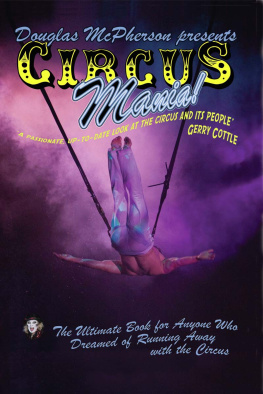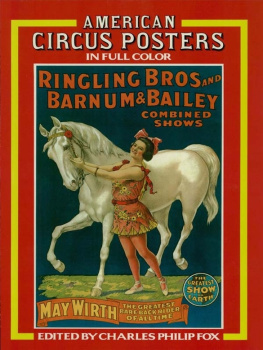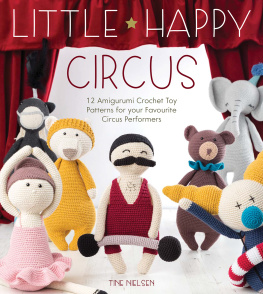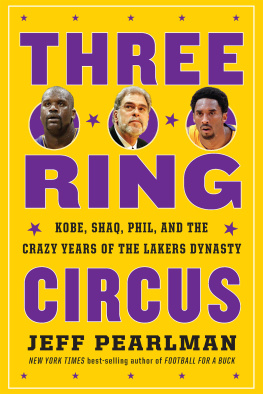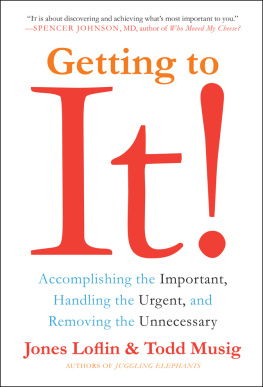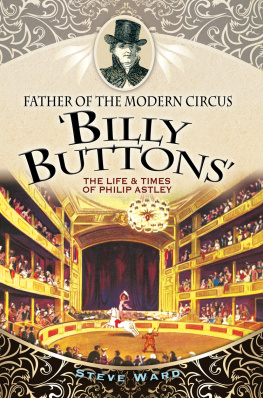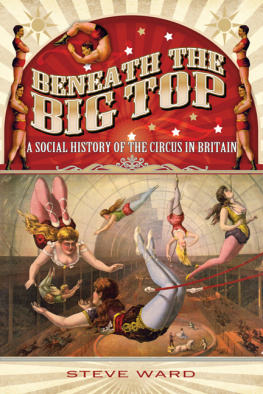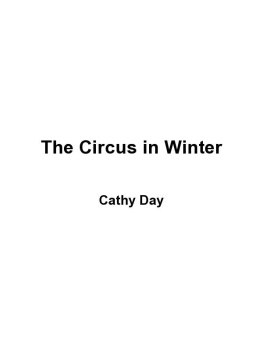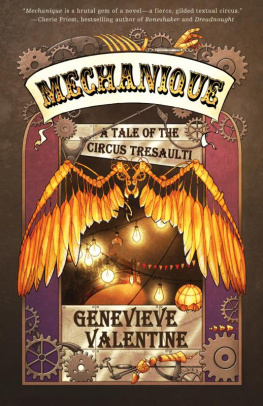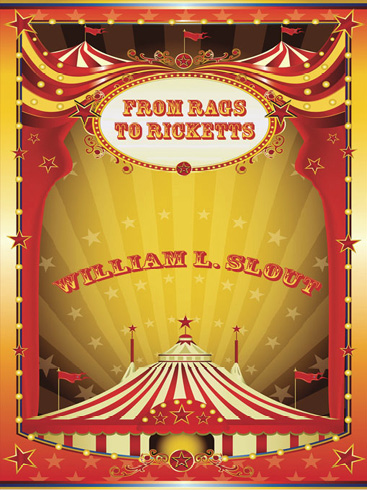
COPYRIGHT INFORMATION
Clipper Studies in the Theatre
ISSN 0748-237X
Number Twenty-One
Copyright 1997, 1998, 1999, 2000, 2012 by William L. Slout
Published by Wildside Press LLC
www.wildsidebooks.com
ACKNOWLEDGMENTS
These essays have been previously published as follows, and are published by arrangement with the author:
From Rags to Ricketts: The Roots of the Circus in Early Gotham was published in Bandwagon: The Journal of the Circus Historical Society, Inc ., Vol. 48, No. 5 (September-October, 2004), p. 28-32. Copyright 2004, 2012 by William L. Slout.
The Great Roman Hippodrome of 1874: P. T. Barnums Crowning Effort was published in Bandwagon: The Journal of the Circus Historical Society, Inc ., Vol. 42, No. 1 (January-February, 1998), p. 29-34. Copyright 1998, 2012 by William L. Slout.
The Recycling of the Dan Rice Paris Pavilion Circus was presented at the 1998 Circus Historical Society Convention in Atlanta, Georgia, and was published in Bandwagon: The Journal of the Circus Historical Society, Inc ., Vol. 42, No. 4 (July-August, 1998), p. 13-21. Copyright 1998, 2012 by William L. Slout.
Strange Bedfellows: The Pogey OBrien Interval, 1874-1875 was published in Bandwagon: The Journal of the Circus Historical Society, Inc ., Vol. 43, No. 4 (July-August, 1999), p. 21-25. Copyright 1999, 2012 by William L. Slout.
Two Rings and a Hippodrome Track was presented at the 2000 Circus Historical Society Convention, and was published in Bandwagon: The Journal of the Circus Historical Society, Inc ., Vol. 44, No. 6 (November-December, 2000), p. 18-23. Copyright 2000, 2012 by William L. Slout.
The Adventures of James M. Nixon, Forgotten Impresario was published in Bandwagon: The Journal of the Circus Historical Society, Inc ., Vol. 41, No. 4 (July-August, 1997), p. 4-14; Vol. 41, No. 5 (September-October, 1997), p. 16-23; Vol. 41, No. 6 (November-December, 1997), p. 44-51. Copyright 1997, 2012 by William L. Slout.
FROM RAGS TO RICKETTS
The Roots of Circus in Early Gotham
Early performances in the city of New York have been reported in various sources over the years, so revealing them here is not original. Rather, the objective within these pages is to place events into a sequence that reveals the progressive nature and increasing popularity of entertainments, as populations increase and the city expands from the Battery and moves up town.
A century before the canvas pavilion was adopted for exhibition purposes showmen relied on semi-permanent or permanent structures for such use. The temporary venues were just that, and, like anything temporary, the life span was short. Permanent buildings, on the other hand, are a symbol of longevity, reassurance that something important has been established. For example, during the latter half of the nineteenth-century, when expanding railroad mileage westward created new towns and cities, one of the first buildings that legitimized their existence was an opera house or theatre. So it is logical that we begin our New York narrative with just that.
The first permanent structure for public amusement viewing in New York was a theatre. Opened on December 6, 1732, it was a primitive affair built by Rip Van Dam, a bulbous Dutchman who owned a warehouse at Maiden Lane and Pearl Street, at the tip of Manhattan, adjacent to Fort George, the loft of which he converted for theatrical use.
Van Dam was a native of Albany. He moved to New York City and became a wealthy merchant and ship-owner, and for many years served on the city counsel, during which time he sired fifteen children.
His converted loft appears to have been called the New Theatre, which might suggest there was an old one somewhere; but I do not believe that to be a fact. It seated about 300 spectators, who squatted on benches and watched the proceedings by dim candlelight. The only stove, being in the makeshift lobby, was a fire hazard and of so little use that during really cold weather the patrons brought foot warmers to survive the lengthy programs. An indication of the comportment of the clientele was a sign that urged them not to spit. This early temple of drama existed only a year or two. It will be after the Revolution before other permanent houses of entertainment are established.
At the beginning of the eighteenth-century the economy of New York was in the midst of an upsurge, primarily due to the exporting of sugar to England. What had been a luxury only the privileged could afford in the previous century, the British consumption of sugar had at least doubled by 1730 due to improved purchasing power and falling prices. Now it was a daily ritual of middle-class life to partake of sweetened chocolate or coffee, accompanied by candies, cakes or bread spread with molasses. The British sweet-tooth had sweetened the pocketbooks of New York merchants. With this, the city saw an expansion of trade in other areas as well. Between 1694 and 1720 over fifty new tavern-keepers, grocers and wine-sellers were granted licenses. New inns provided housing for seamen and business travelers. Retail shops also boomed.
Yet there was a wide divide between the haves and have-nots, and by 1730 a depression was taking root. There were some 8,600 people living in the city at this time, but a mere 140 merchants and landowners owned half the taxable wealth. One third of the white population was destitute. It is little wonder, then, that traveling exhibitions were slow to develop.
There were, however, some eighteenth-century circus forerunners that offered entertainments and exhibitions which early-on took the place of museums, menageries, mechanics fairs and hall shows, presented at such sites as taverns, storefronts, open fields or city squares. Booth shows with small collapsible stages were erected on the street, in the smallest of buildings, by the seaside, or most any place people were in the habit of congregating. These were the type of amusements that could be easily transported from place to place on horseback or by small wagon, or even on the back of a single operator.
Mechanical wonders were popular items of display for which admission was charged. There was a man named Blanchard who revealed a carriage that was made to run without horses, described as an automaton eagle which, when guided by a passenger, could move at the speed of a stagecoach. There were scientific phenomena such as a way of electrifying several persons at the same time so fire darted from all parts of their bodies; or a contrivance that created by luminous rays the thirteen stars of the United States, and other pieces of artificial fireworks. There was even something called a philosophical optical machine. Barnum must have loved the thought of them all.
Forerunners of the menagerie date as far back as 1728 when New Yorkers were exposed to a lion at the Jamaica Fair. The fair was originated this year as a site for selling merchandize and fine horses.
In 1733 a camel was on exhibit at the sign of the Cart and Horse. An item in the Gazette read:
NOTICE is hereby given to all Persons, that there is come to Town, a very Wonderful and Surprising Creature to all Persons in these Parts of the World; and it is in Scripture the very same Creature which is there called a CAMEL. It is impossible to describe the Creature; and therefore all Persons of ingenious Curiosity have an Opportunity of satisfying themselves. The Creature was brought with great Difficulty from the Deserts of Arabia in that Quarter of the World which is called Asia to New England; a Curiosity which never was in this Country, and very likely will never be again.
The price of viewing was one shilling for adults and six pence for children. Of course the Curiosity was seen again; in fact a pair of them, when in 1787 they were housed for show at Stevens Livery Stables on Wall Street.
Next page

